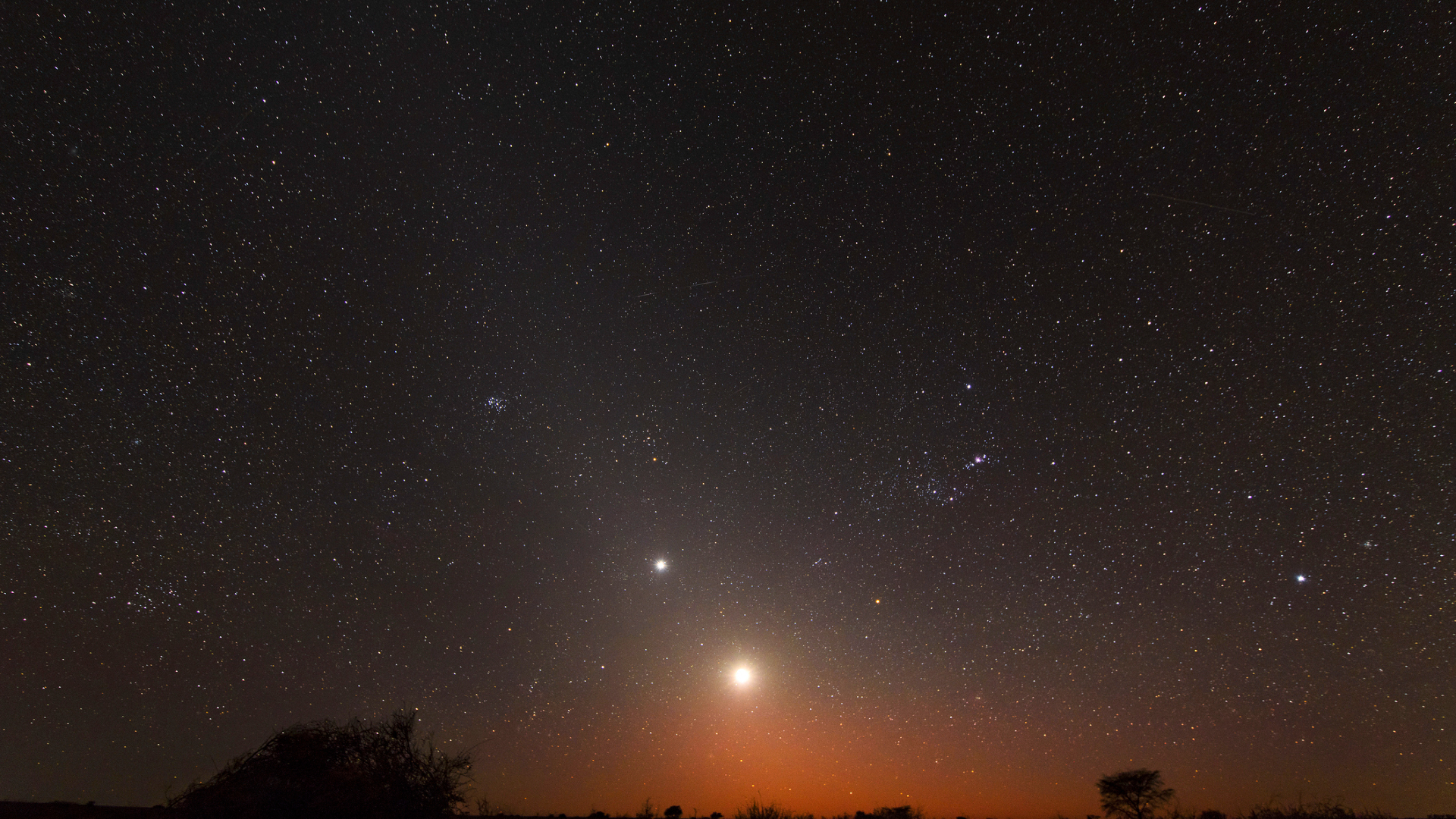'Moonfall' pulls scenes from space shuttle Endeavour move 10 years ago
"How do you plan on getting up there? You know all of our shuttles are in museums."

Hollywood has finally taken inspiration from the decade-ago move of a NASA space shuttle through the streets of Los Angeles and it only took the moon falling out of the sky for it to happen.
"Moonfall," which opened in theaters on Friday (Feb. 4), is the first major motion picture to use the 2012 delivery of the space shuttle Endeavour to the California Science Center as the direct basis for a plot point. (Note: this article includes spoilers, but only as it relates to the use of Endeavour in "Moonfall," which was also included in the film's advance marketing.)
Up until now, only a short film ("Satellite Beach," 2014) that was shot guerrilla style during the orbiter's move and an implied reference in the recent Netflix satire "Don't Look Up" have adapted the shuttle spectacle, which was witnessed live by millions of people, including many in the entertainment industry.
Related: Watch the first 5 minutes of 'Moonfall,' Roland Emmerich's new sci-fi disaster film
"I am surprised it took so long," Dennis Jenkins, director of the California Science Center's project to display the space shuttle Endeavour and a technical advisor to "Moonfall," said in an interview with collectSPACE.com. "I have heard rumors there are other movies or television shows about to be released that use a similar premise."
"I am also somewhat surprised at the way ['Moonfall' director Roland] Emmerich approached it," Jenkins said.
On the road (again)
"It was a provocative idea," Emmerich told collectSPACE. "And, by the way, it was one of the first ideas that we had."
Breaking space news, the latest updates on rocket launches, skywatching events and more!
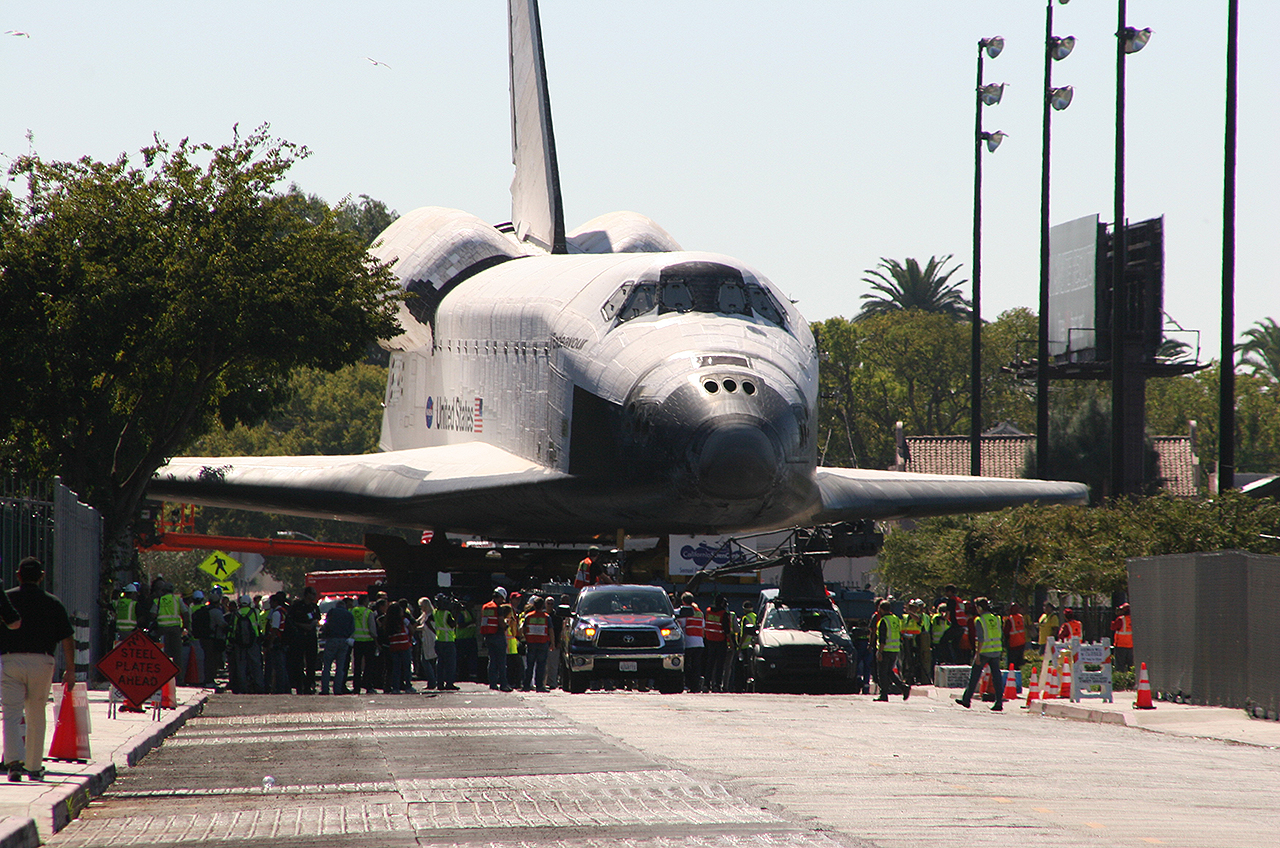
As Emmerich recalls, having come out to see it for himself in 2012, the delivery of Endeavour involved a modified Boeing 747 jetliner ferrying the orbiter piggyback to Los Angeles International Airport and then a convoy towing the shuttle on a three-day journey through the streets of Los Angeles to retire on display at the California Science Center.
The move was always considered a one-way trip.
In "Moonfall," NASA has to find a way to send a crew to the moon after it exhausts its supply of more modern launch vehicles.
"How do you plan on getting up there?" ex-astronaut Brian Harper (actor Patrick Wilson) asks NASA executive and his former crew member Jocinda "Jo" Fowler (Halle Berry) in the movie. "You know all of our shuttles are in museums."
"The Endeavour is right here in L.A.," replies Fowler. "I know it sounds completely crazy."
"No ... this is a whole other level of insane," Harper responds.
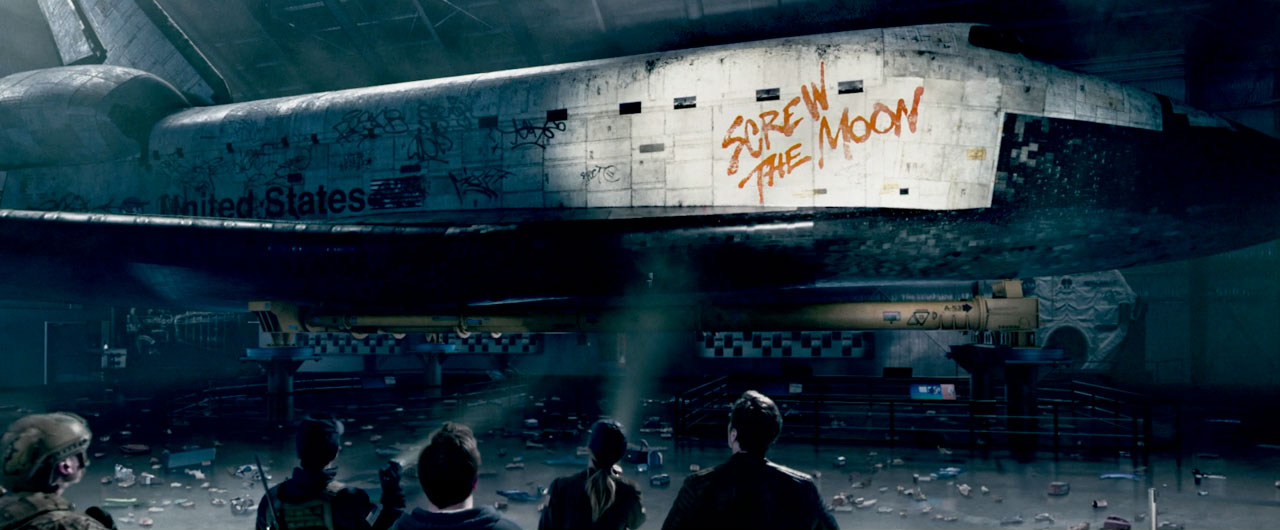
In subsequent scenes, Fowler, Harper and K.C. Houseman (John Bradley) are shown entering Endeavour's display pavilion followed by the orbiter being transported down a street as moon-strewn debris is moved out of its way. (The latter was achieved through a combination of practical effects and CGI, with the streets of L.A. being recreated in Montreal and Endeavour inserted digitally.)
Endeavour is then shown being ferried atop a shuttle carrier aircraft and, finally, standing with two solid rocket boosters and an external tank on Space Launch Complex-6 (SLC-6, or "Slick-6"), a Vandenberg Space Force Base launch pad that was originally built (but never used) by the U.S. Air Force to launch shuttles on dedicated missions for the Department of Defense.
The Endeavour transport scenes in "Moonfall" were originally intended to be a bit longer, but during editing, it was decided to "get to space sooner,"said Emmerich.
"It was maybe two minutes longer, that whole process, and there was also a scene inside the 747 on its way to Vandenberg," he said, describing the cut scenes.
To space (or bust)
"Endeavour would still work, to fly today. Everything is still in there," Emmerich told collectSPACE.
Well, maybe not everything.
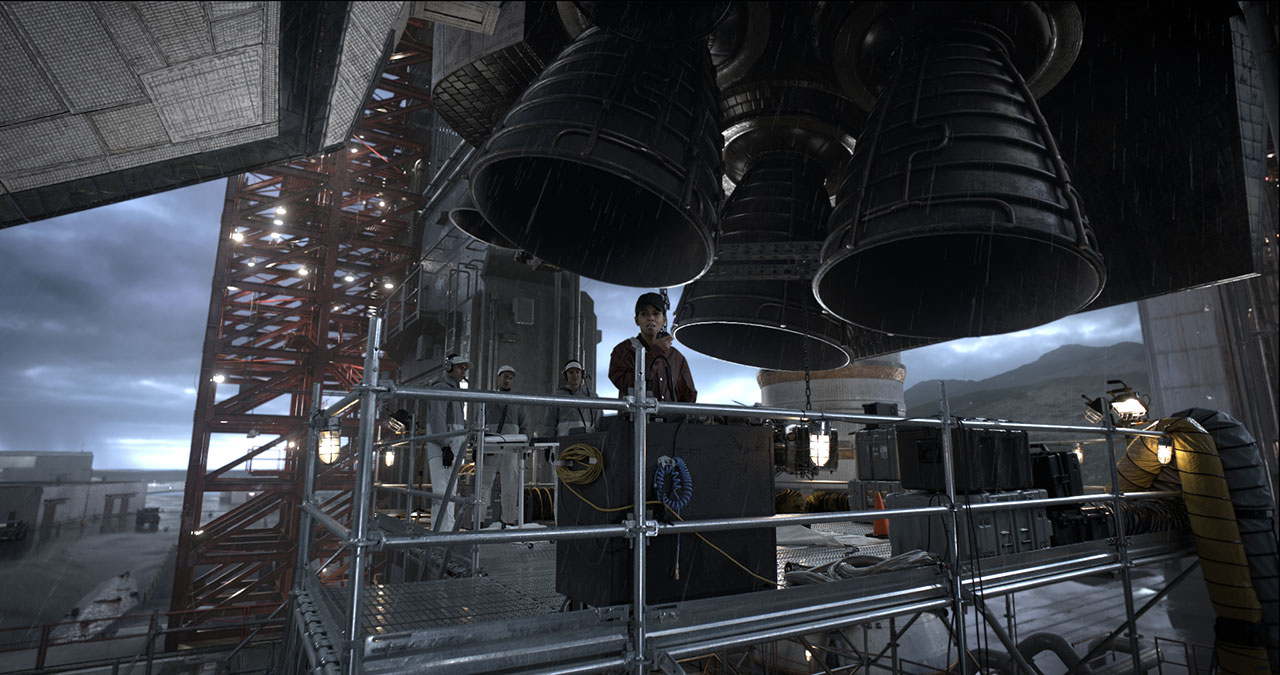
"The most obvious problem with making Endeavour flightworthy is that there are no main engines in her," said Jenkins, who as a NASA shuttle engineer worked on transitioning the orbiters from flight vehicles to museum displays. "We have nozzles ('replica shuttle main engines'), but there are no engines and very little of the main propulsion system plumbing left in the aft compartment. NASA saved the engines and much of the plumbing for use on the Space Launch System."
"There are also no auxiliary power units; all of those were scrapped since they had touched hypergolic propellants. So there is no hydraulic power on the ship. One fuel cell is missing and the other two are not hooked up. One water spray boiler is missing," Jenkins said. "As she sits today, she has a replica airlock and a remote manipulator. There is no potty installed — its on display elsewhere in the California Science Center, and much of the middeck equipment is ground test or engineering units, not flight hardware."
And then there is the not so small issue with sourcing the propulsion elements to complete the full space shuttle launch stack.
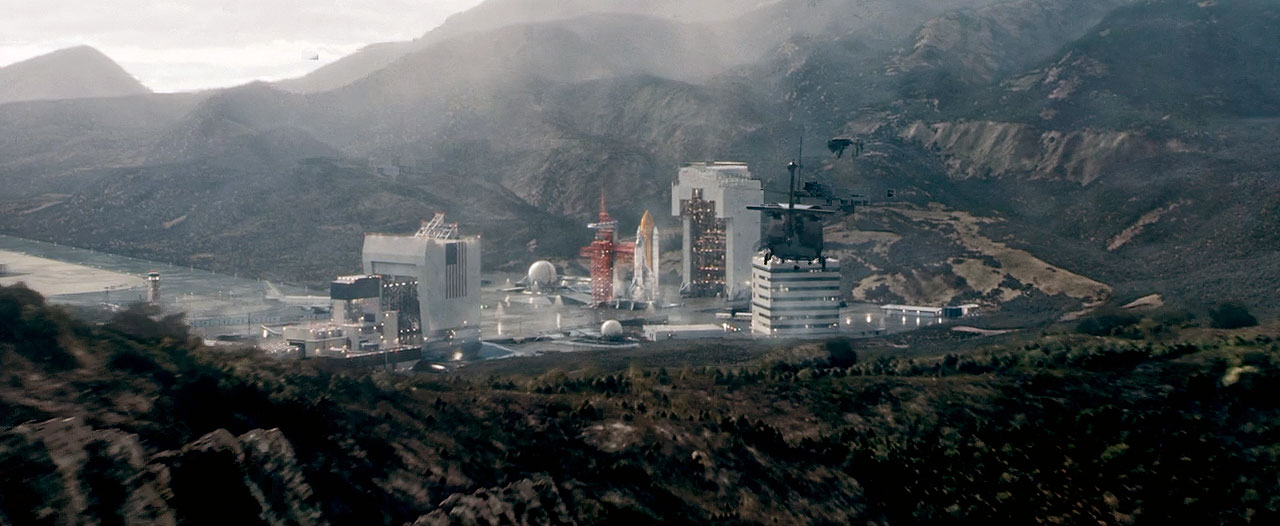
"Where did an external tank come from? ET-94, awaiting display with Endeavour, is the last and she is not really flightworthy without a lot of work. Same for the solid rocket boosters. Plus, SLC-6 has not been configured for the space shuttle since 1987, so how would you stack and launch a space shuttle?" Jenkins said.
Even if the hardware issues could be solved, there would still be another hurdle to get Endeavour off the ground.
"A major problem is that there is no software development environment left for the on board computers, so there is no way to update or load software on the ship. It would be extremely hard to reconstitute this capability," said Jenkins.
And that only addresses what would be needed to return Endeavour fo flight, to say nothing of what Endeavour faces once launched in "Moonfall," such as lifting off in a tidal wave and leaving Earth orbit for the moon. Ultimately, it is left to the audience to suspend their disbelief.
"If it's a movie, people will believe quite a lot. But when you go too far, they say, 'No, no, not like that.'" said Emmerich. "So it always has to have this believability."
Follow collectSPACE.com on Facebook and on Twitter at @collectSPACE. Copyright 2022 collectSPACE.com. All rights reserved.

Robert Pearlman is a space historian, journalist and the founder and editor of collectSPACE.com, a daily news publication and community devoted to space history with a particular focus on how and where space exploration intersects with pop culture. Pearlman is also a contributing writer for Space.com and co-author of "Space Stations: The Art, Science, and Reality of Working in Space” published by Smithsonian Books in 2018.
In 2009, he was inducted into the U.S. Space Camp Hall of Fame in Huntsville, Alabama. In 2021, he was honored by the American Astronautical Society with the Ordway Award for Sustained Excellence in Spaceflight History. In 2023, the National Space Club Florida Committee recognized Pearlman with the Kolcum News and Communications Award for excellence in telling the space story along the Space Coast and throughout the world.

